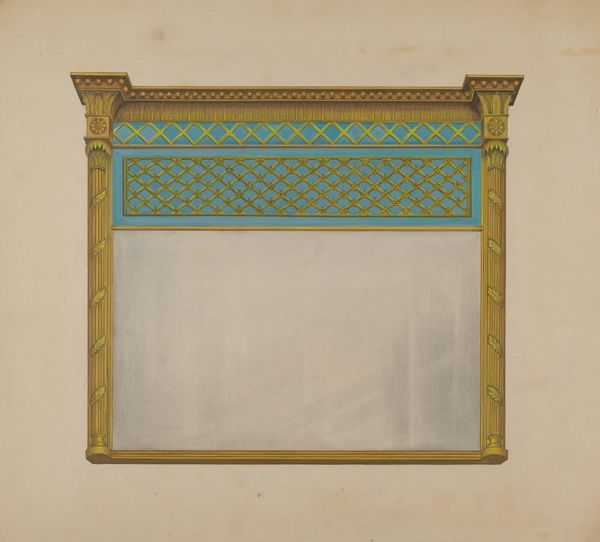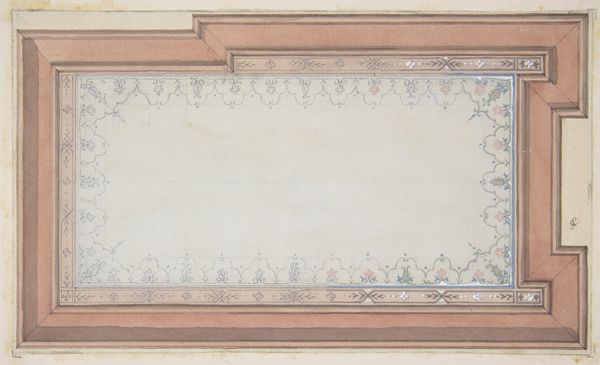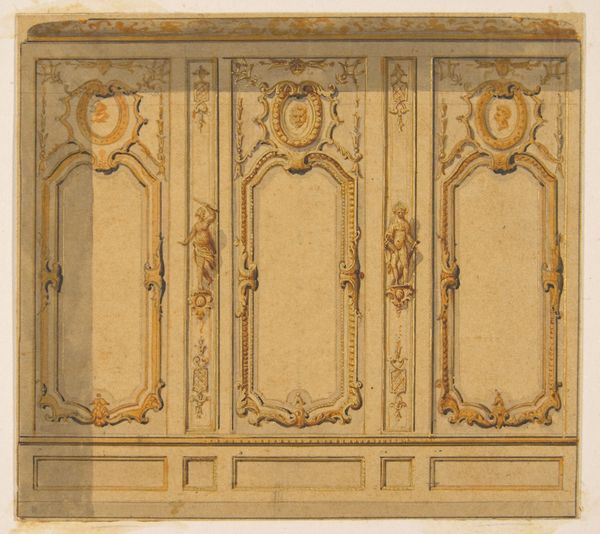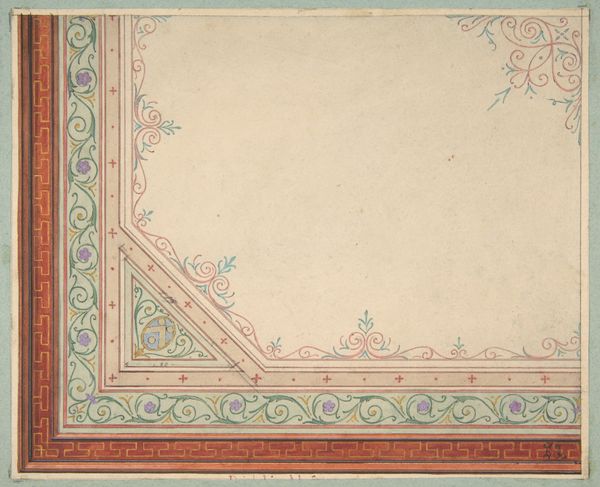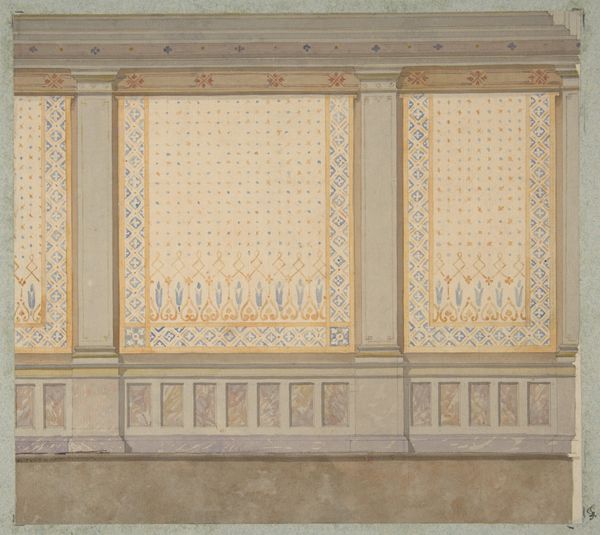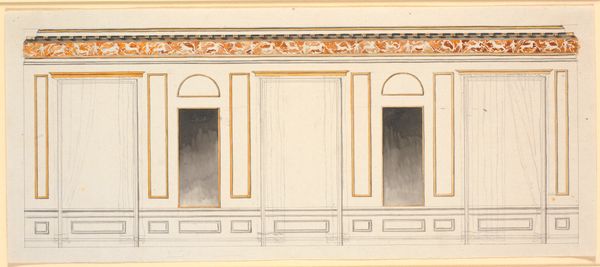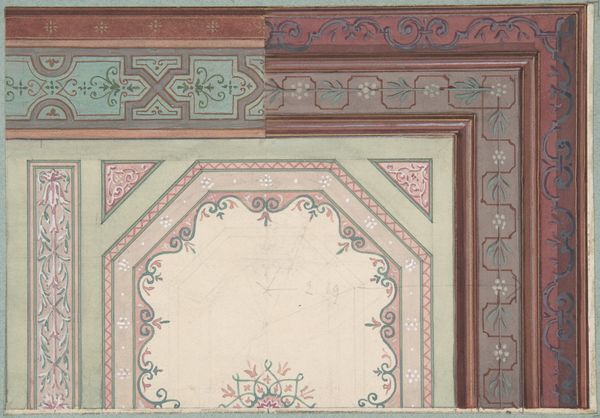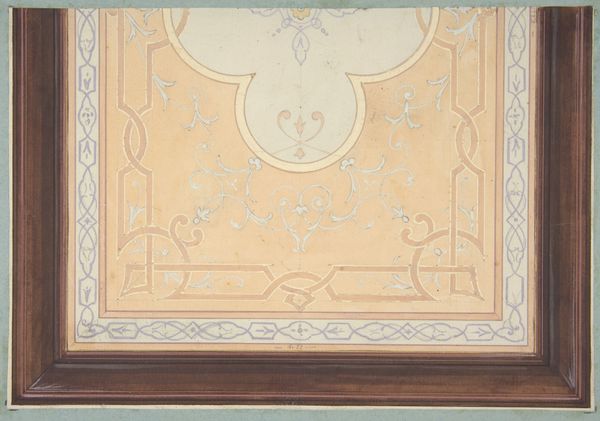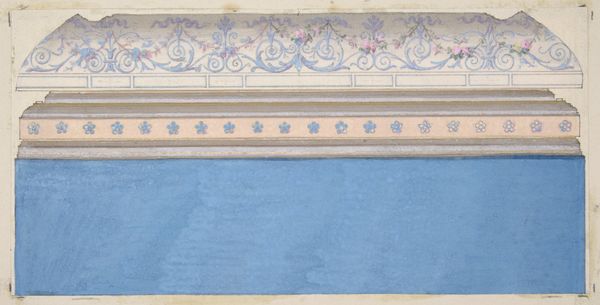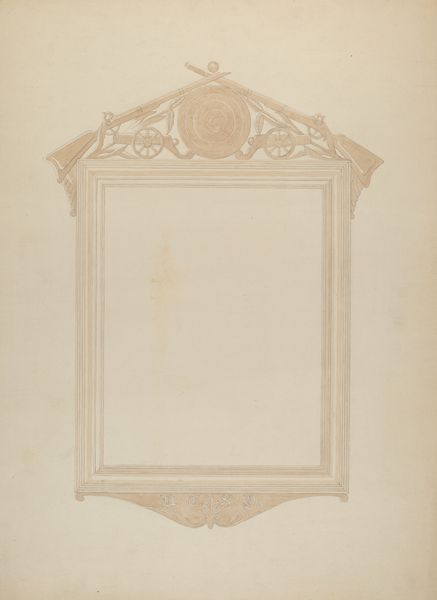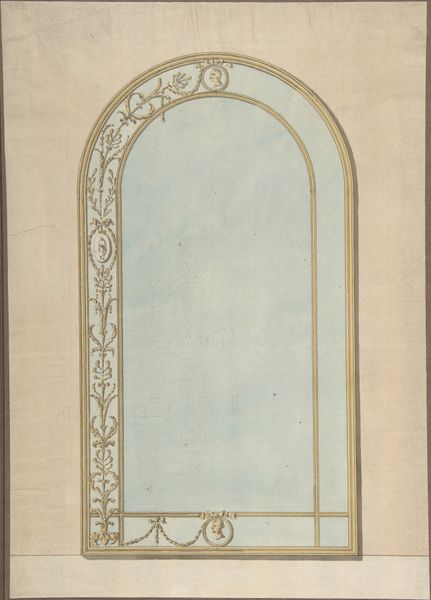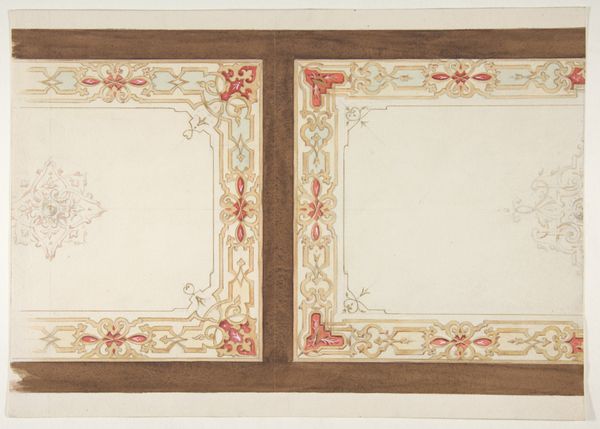
drawing, watercolor
#
drawing
#
watercolor
#
watercolor
Dimensions: overall: 24.3 x 30.7 cm (9 9/16 x 12 1/16 in.) Original IAD Object: 3'5"high; 5"wide.
Copyright: National Gallery of Art: CC0 1.0
Editor: This is Arthur Johnson's "Mantel Looking Glass" from around 1937, created using watercolor and drawing techniques. The artwork itself portrays a meticulously designed mirror, evoking a sense of classical elegance and architectural precision. What elements of its structure do you find most compelling? Curator: The interplay between line and plane is paramount. Observe the tripartite division: a solid rectangular mirror anchored by flanking columnar forms. The detailed watercolor technique enhances the verticality of the columns. The gilded details create a secondary rhythm against the plain, central reflecting plane. How do you read that blank plane in contrast to the ornamentation? Editor: I see what you mean. It is less a drawing and more of an architecture. Maybe the contrast between ornate and plain draws more attention to what the mirror might reflect-- the occupant. Do you notice symbolism? The floral ornamentation seems deliberate... Curator: Indeed. The meticulously rendered garland motif serves as a semiotic marker, signifying nature tamed and artfully displayed. Its stylized form contributes to the artwork’s overarching symmetry and controlled aesthetic, providing contrast to the sharp right angles. What visual system is produced? Editor: It almost resembles the Neoclassical design principles. Each element works cohesively. Thinking about its aesthetic framework, it feels like the composition creates order. I appreciate your observation on visual systems. I will focus more on these in the future. Curator: Understanding how design choices interact enables deeper artwork analysis. Close-looking and considering symbolic functions should continue guiding future viewings.
Comments
No comments
Be the first to comment and join the conversation on the ultimate creative platform.
